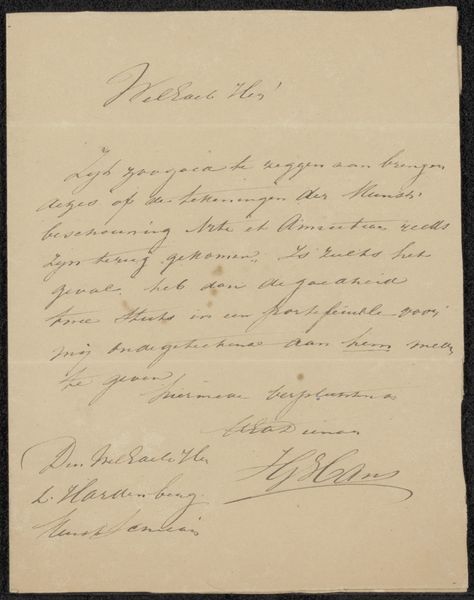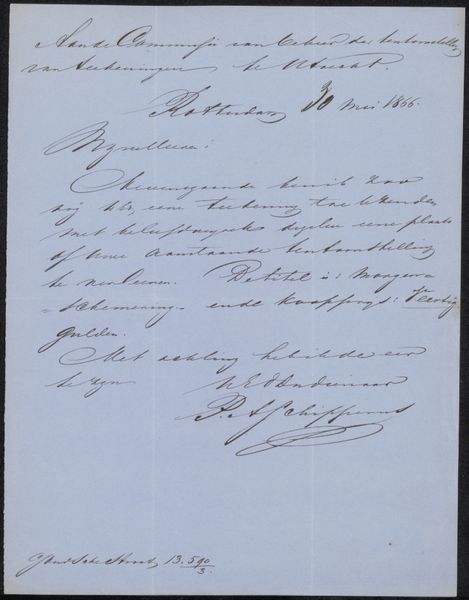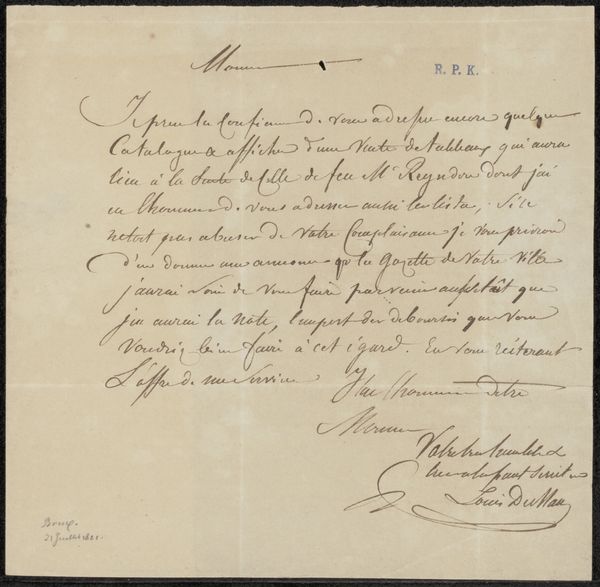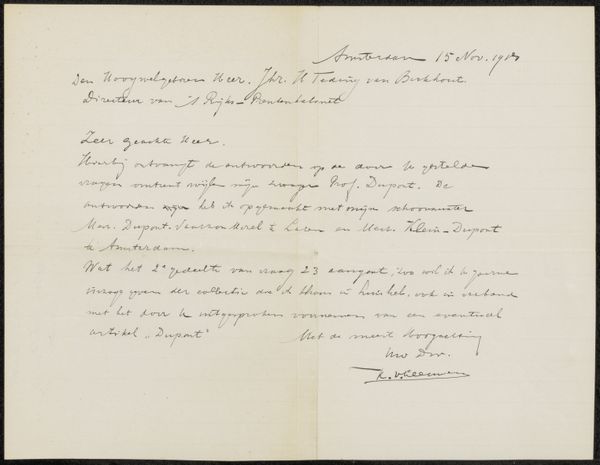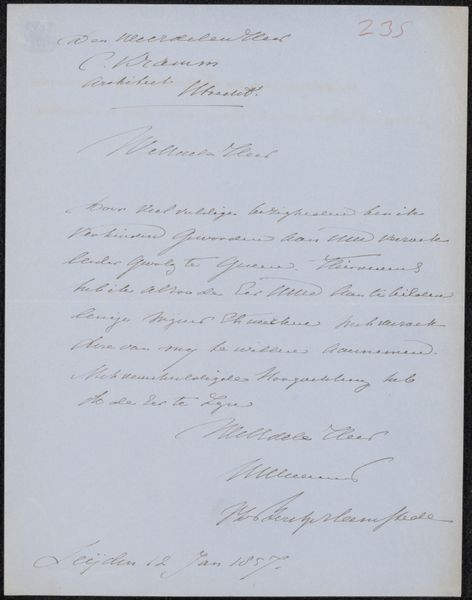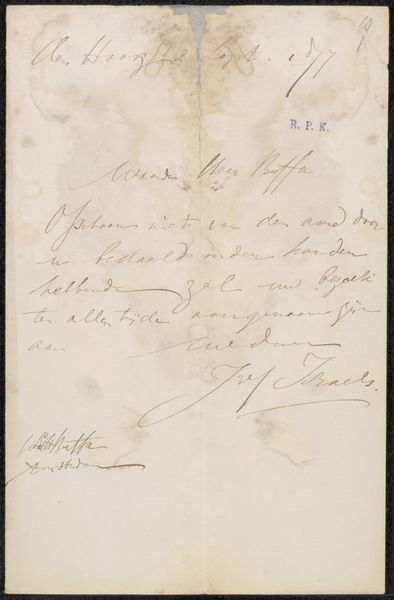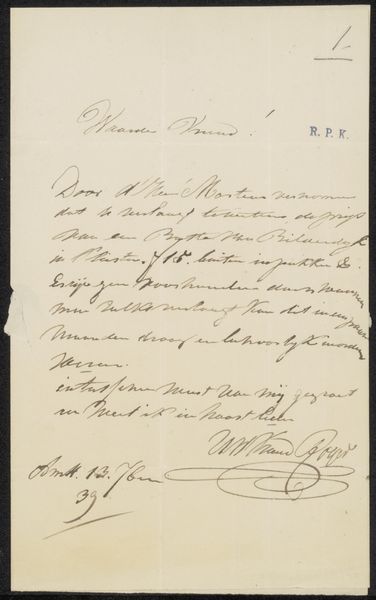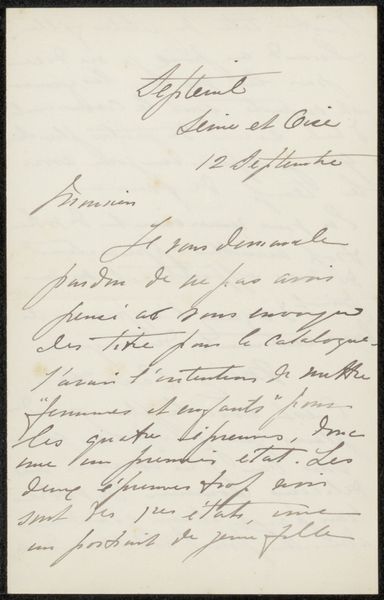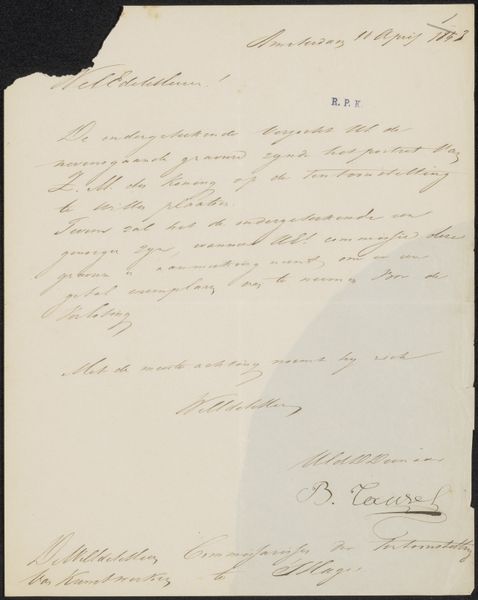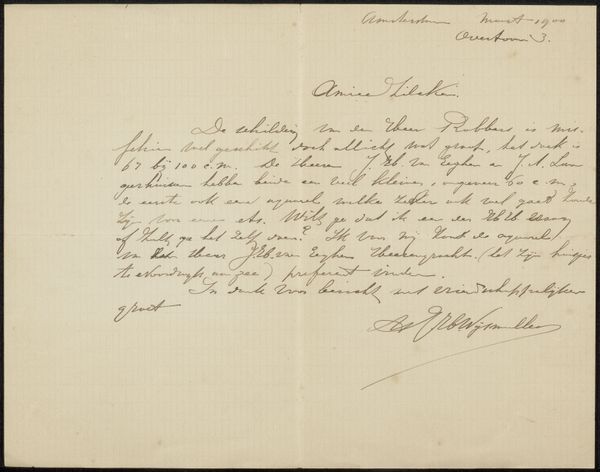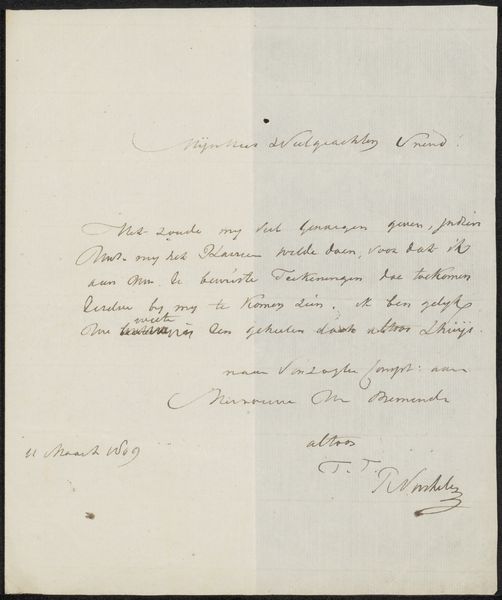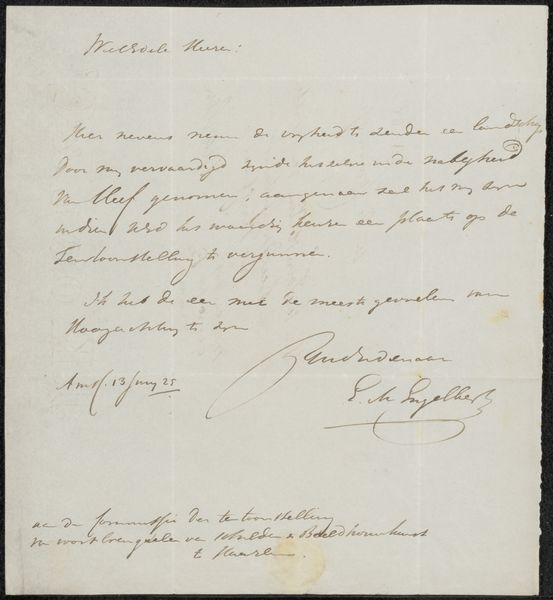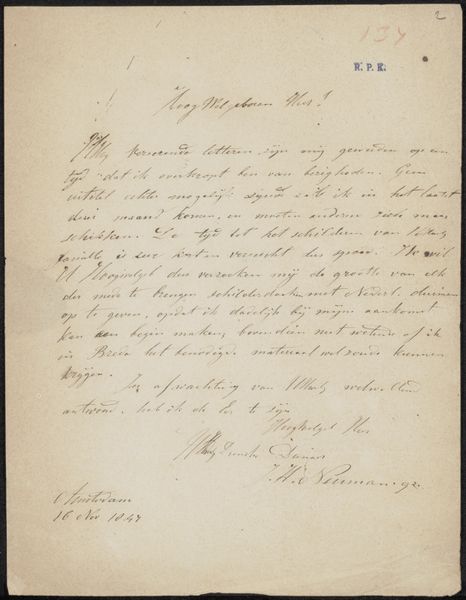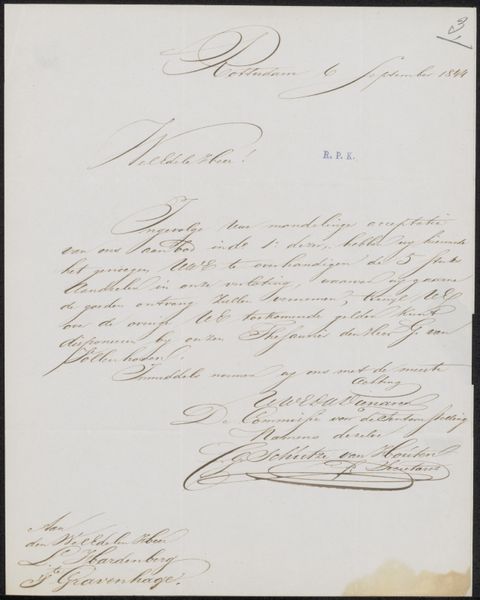
Copyright: Rijks Museum: Open Domain
Curator: This handwritten letter, "Brief aan Philip Zilcken," comes from the Valadon & Cie. Boussod publishing house and likely dates to 1890. It’s an ink drawing on paper. Editor: My immediate reaction is the elegance of it! Even though I don't understand the language, there’s a refined sensibility in the loops and curves of the script. Curator: The letter's creation must be understood within the context of the late 19th-century art world. Boussod, Valadon & Cie., formerly Goupil & Cie., played a vital role in art dealing and publishing, shaping tastes and disseminating artistic ideas. This letter likely contains information about an artist represented by the gallery, and reveals the intricate web of relationships that propelled careers forward at this time. Editor: Exactly. You can feel the importance of communication through the careful penmanship and stylized lettering, which elevates correspondence beyond the merely utilitarian. It tells you this message matters and highlights the character of those sending and receiving the correspondence. Curator: The location specified on the letterhead, “La Haye,” grounds it in a specific historical moment. Considering the social and economic changes taking place then, one can explore questions related to cultural capital and power, too. The letter would reveal the nature of this gallery's role in shaping artistic production. Editor: For me, beyond this, it almost reads as its own piece of art. The shapes created by the lines of script are balanced, with a real sense of aesthetics. I would want to know more about the writers. Curator: Right, examining the letter could offer unique perspectives into a time when modern art dealing emerged in response to rapidly changing economic and social conditions. Editor: Agreed. It's a tiny window into a world we can only glimpse through these enduring visual cues and hints. It sparks an innate interest to read it, and it feels very personal somehow. Curator: Absolutely, this intersection of material culture, historical context, and gender can offer fascinating entry points. Editor: It’s precisely the interplay between these formal elements and that unseen network of relationships which is what makes this simple letter feel, ultimately, so complete.
Comments
No comments
Be the first to comment and join the conversation on the ultimate creative platform.
